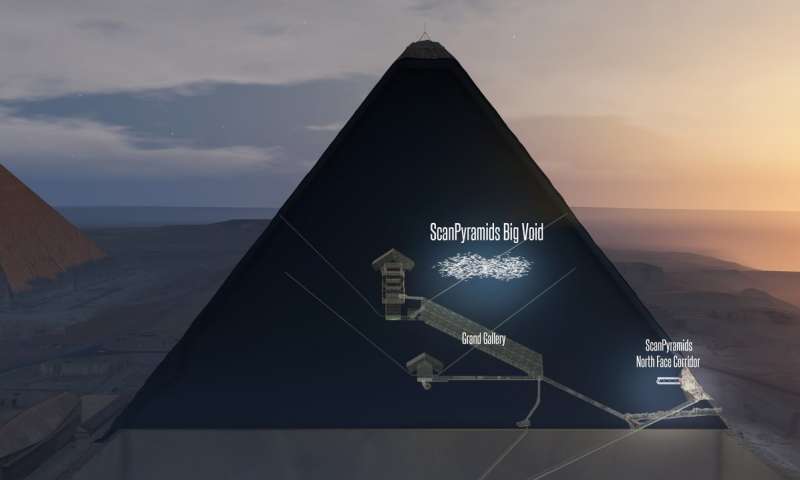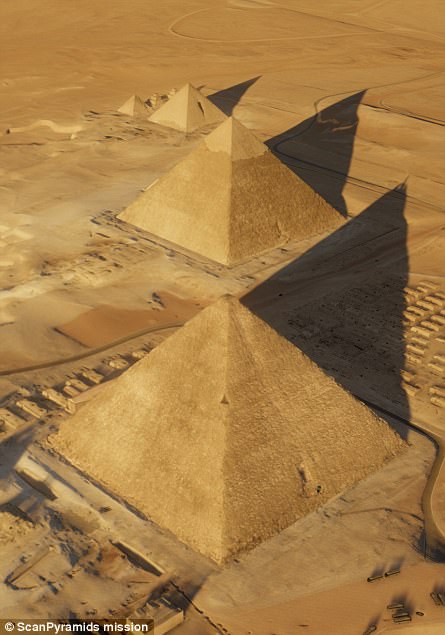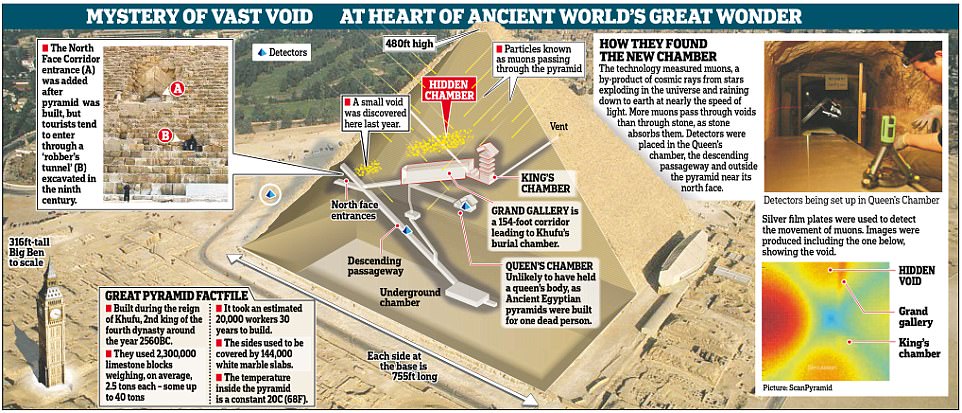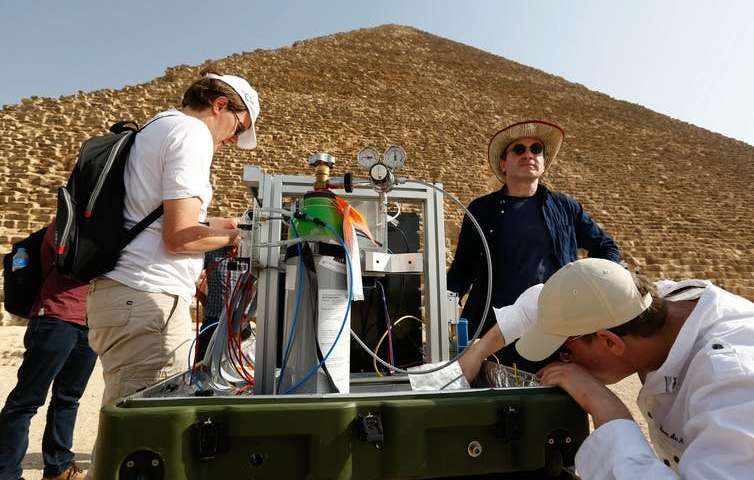This is the big story this week – the discovery of a big void in the Great Pyramid of Khufu. See for example https://phys.org/print428839163.html …. a hidden chamber has been found in Egypt's Great Pyramid at Giza, courtesy of an article in November's issue of Nature journal. A scan of the pyramid, looking for chambers, has found a large void directly above the Grand Gallery. Is it simply a gap in the pyramid's architecture or did it have a function of some kind?
Aidan Dodson said the pyramid's burial chamber and sarcophagus have already been found so the new area was probably kept empty above the Grand Gallery to reduce the weight of stones pressing down on its ceiling. He also said similar designs were known from other pyramids …
 … Zahi Hawass (still around it seems) said the Great Pyramid is full of voids. In order to construct the Grand Gallery you had to have a hollow in order to access it and lay the roof. See also https://news.nationalgeographic.com/2017/11/great-pyramid-giza-void-disc… …. which quotes various American specialists who comment on the void and the process involved. The scan was made by a Japanese team of researchers including particle physicists. It was wide ranging and very efficient as far as the science was concerned. The purpose of the void is an unknown. It is 100 feet in length and a Cambridge archaeologist, Kate Spence, said that it may have been used to place huge blocks of stone in place in the ceiling of the Kings Chamber – and left empty or loosely filled with rubble.
… Zahi Hawass (still around it seems) said the Great Pyramid is full of voids. In order to construct the Grand Gallery you had to have a hollow in order to access it and lay the roof. See also https://news.nationalgeographic.com/2017/11/great-pyramid-giza-void-disc… …. which quotes various American specialists who comment on the void and the process involved. The scan was made by a Japanese team of researchers including particle physicists. It was wide ranging and very efficient as far as the science was concerned. The purpose of the void is an unknown. It is 100 feet in length and a Cambridge archaeologist, Kate Spence, said that it may have been used to place huge blocks of stone in place in the ceiling of the Kings Chamber – and left empty or loosely filled with rubble.
See also www.dailymail.co.uk/sciencetech/article-5040093/Hidden-structure-inside-… … which is a really nice piece with some great images and modelling …


At https://phys.org/print428915659.html … we have a description of the processes involved in discovering the void. The technology works by tracking particles known as muons – which are similar to electrons. However, they are over 200 times heavier than electrons and the difference in mass is important as it determines how they interact when hitting matter (such as stone blocks). Muons are commonly produced in cosmic rays and because they have a longer life than electrons and are fairly stable they tend to be found at ground level. They are also fairly easy to trace as they produce a thin trail of ionisation along the path they take – which means they knock electrons off atoms, leaving the atoms charged. This allows scientists using several detectors to follow the path of the muon back to its origin. If there is a lot of material in the way of the muon they can become stuck and lose energy, and remain locked in the dense material. Such properties make muons useful for taking images of objects that otherwise are impenetrable or impossible to observe – such as the innards of a pyramid. Just as bones will produce a shadow on a photographic film exposed to x-rays so too will heavy and dense objects produce a shadow, or a reduction in muon numbers, as they pass through solid objects.
As for the pyramid muon research we may note that a solid pyramid would leave a shadow or a reduction in in the number of muons but if there is a hollow void, as found, the muon flux would be increased in the direction of the void. The bigger the difference between solid and hollow the easier it becomes. The Japanese team, however, employed three different detector technologies to investigate the pyramid – which are described.

